
The 4th Marine Division is a reserve division in the United States Marine Corps. It was raised in 1943 for service during World War II, and subsequently fought in the Pacific against the Japanese. Deactivated after the war, the division was re-formed in 1966 and elements of the division deployed during the Gulf War in 1990–1991, as well as during the Iraq War. It is currently the ground combat element of the Marine Forces Reserve and is headquartered in New Orleans, Louisiana, and has units throughout the United States.

2nd Battalion, 24th Marines (2/24) is an infantry battalion in the United States Marine Corps based out of Chicago, Illinois, consisting of approximately 1000 Marines and Sailors. The battalion falls under the 23rd Marine Regiment and the 4th Marine Division.

1st Battalion, 25th Marines (1/25) is a reserve infantry battalion in the United States Marine Corps located throughout New England and upstate New York and consisting of approximately 850 Marines and Sailors. The battalion falls under the 25th Marine Regiment in the 4th Marine Division.
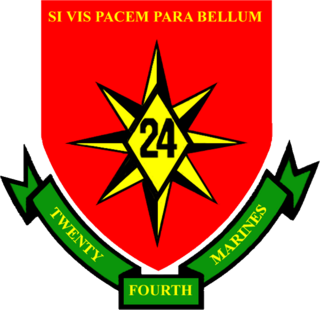
The 24th Marine Regiment was one of three infantry regiments in the 4th Marine Division of the United States Marine Corps. Its last headquarters before being deactivated on 9 September 2013 was in Kansas City, Missouri.

The 23rd Marine Regiment is a reserve infantry regiment of the United States Marine Corps. It is headquartered in San Bruno, California and falls under the command of the 4th Marine Division and the Marine Forces Reserve.

On 15 June 1944, United States Marine forces landed on the southwest coast of the island of Saipan in the central Marianas chain; these were followed a day later by US Army forces. This invasion was part of Operation Forager, an effort to recapture the entire Marianas chain from the Empire of Japan.

1st Battalion, 23rd Marines (1/23) is one of 32 infantry battalions in the United States Marine Corps, and one of only eight battalions found in the reserve. It is located throughout Texas and Louisiana consisting of approximately 1000 Marines and Sailors. They fall under the command of the 23rd Marine Regiment and the 4th Marine Division.

2nd Battalion, 23rd Marines (2/23) is a reserve infantry battalion in the United States Marine Corps located throughout the Western United States consisting of approximately 1000 Marines and Sailors. They fall under the command of the 23rd Marine Regiment and the 4th Marine Division.

3rd Battalion, 24th Marines (3/24) was a reserve infantry battalion in the United States Marine Corps. The battalion was first formed in 1943 for service in the Pacific Theater of Operations during World War II, taking part in a number of significant battles including those at Saipan and Iwo Jima before being deactivated at the end of the war. In the early 1960s, the unit was reactivated as a reserve battalion. It was located throughout the Midwestern United States and consisted of approximately 800 marines and sailors. The battalion was part of the 24th Marine Regiment and the 4th Marine Division. Recent operations included tours in Iraq and Afghanistan. On May 19, 2013, the battalion was deactivated (retired) as a part of 2013 Marine Corps Force Restructuring, along with the 24th Marine Regiment. 3/24 personnel were reallocated to 23rd Marine Regiment, with the majority of the companies becoming 3rd Battalion, 23rd Marines.

USS Southampton (AKA-66) was a Tolland-class attack cargo ship in service with the United States Navy from 1944 to 1946. She was sold into commercial service and scrapped in 1971.

The 4th Reconnaissance Battalion is a reserve reconnaissance battalion in the United States Marine Corps. It falls under the 4th Marine Division and Marine Forces Reserve.

USS Mellette (APA-156) was a Haskell-class attack transport in service with the United States Navy from 1944 to 1946 and from 1950 to 1955. She was scrapped in 1988.
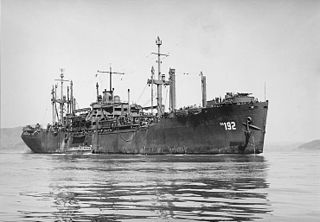
USS Rutland (APA-192) was a Haskell-class attack transport built and used by the US Navy in World War II. She was a Victory ship design, VC2-S-AP5. She was named after Rutland County, Vermont, USA.
The 109th Division was an infantry division of the Imperial Japanese Army. Its call sign was the Courage Division. It was formed on 24 August 1937 in Kanazawa as a square division, simultaneously with the 108th division. The nucleus for the formation was the 9th division headquarters. It was subordinated from the beginning to the Japanese Northern China Area Army.

20th Marine Regiment was a Composite Engineer Regiment of the United States Marine Corps that fought during World War II.
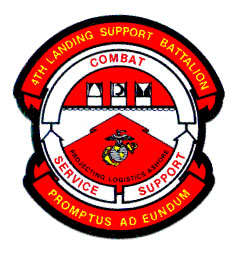
4th Landing Support Battalion(4th LSB) was a Military Landing Support battalion of the United States Marine Corps Reserve. The unit was based out of New Orleans, Louisiana, and fell under the command of the 4th Marine Logistics Group. The Battalion has been decommissioned.

Naval Mobile Construction Battalion 133 is a United States Navy Construction Battalion, otherwise known as a Seabee battalion, homeported at the Naval Construction Battalion Center. The unit was formed during WWII as the 133rd Naval Construction Battalion. It saw action and was decommissioned shortly after the war ended. The unit was reactivated as Mobile Construction Battalion 133 for the Vietnam War and remains an active unit today.
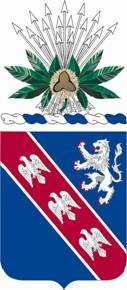
The 147th Regiment (Regional Training Institute) is a training regiment of the Ohio Army National Guard. Previously known as the 147th Infantry Regiment and the 6th Ohio Infantry, it has served in several American wars as a combat infantry unit, but now maintains the Ohio Regional Training Institute (RTI) in Columbus, Ohio. Its regimental motto is Cargoneek Guyoxim, which is a Chippewa language phrase meaning "Always Ready." The lineage of the regiment is carried by the 174th Air Defense Artillery Regiment.

George Davis Webster was a decorated officer of the United States Marine Corps with the rank of brigadier general who is most noted as commanding general, Marine Corps Development and Education Command at Quantico, Virginia.
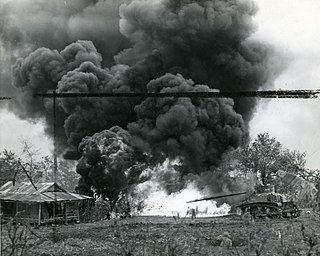
During WWII United States Naval Construction Battalions ("Seabees") modified/created all of the main armament flame throwing tanks that were used in the Pacific War: by USMC in the Battle of Saipan, Battle of Tinian, Battle of Iwo Jima, and by the U.S. Army in the Battle of Okinawa.




















